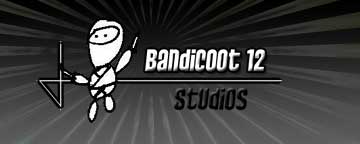
The first of the two big companies present at Wondercon is The Big N. Nintendo's booth is purely themed and focused around the release of Fire Emblem: Shadow Dragon, the new DS remake of the original 1990 Famicom debut of the series, which tells the rise of the Smash-famous Prince Marth. The booth is staffed entirely by an external marketing firm, which left me no opportunities to talk to real industry professionals, but I was able to weed out some pertinent sound bites for those of you who are already familiar with Fire Emblem's age old rock/paper/scissors mechanics. Now, reflecting Nintendo's company-wide emphasis on catering to the casual gamer and making every product as accessible to the non-initiated consumer as possible, the Fire Emblem booth and its presenters was very much geared to the family audience. While the speakers were preaching the wonders of a game as simple as chess, I was more interested in the nitty gritty details of what new features this entry in the series has to offer, as while this series has always been solid, it has seen very little in innovation with each additional game. The first thing to behold is the gorgeous new character designs, all done by legendary mangaku Masamune Shirow, of Ghost in the Shell fame. Also, Prince Marth. But enough fanboyism, let's talk gameplay.
The core basics of the gameplay remains untouched, but there are certain little flourishes that truly make the game shine and gives it a far more polished depth than the other recent Fire Emblem games. The most obvious addition is the ability to control everything via touch screen. While those averse to d-pads may find this a welcome option, I found it to be less than useful, as the overall playing grid and sprites are fairly small, so trying to navigate menus and control units seamlessly is not as fluid as one could hope. However, it's the top screen that makes best use of the DS platform. Each highlighted field unit has their profile displayed automatically, so perusing the stats of enemy units is a breeze. When using this feature on friendly units, however, the ability to switch between equipment presets is available with the press of a single button. Additionally, there are various useful screens you can tab through using L and R, including a mini-map that shows your entire playing field and the location of every single playable unit (this becomes very useful for formulating tactics in multiplayer). Another cool feature is the ability to highlight multiple units to calculate their combined range of movement and attack. Overall, many of the new little features focus mainly on being able to fully micromanage and remain aware of all possible outcomes during enemy phases.
Beyond the actual combat, there are two new systems certainly worth mentioning. The first is the introduction of a forging system. While it takes immense amounts of resources, players are now able to craft truly unique weapons with customizable stats (I was informed by a booth attendant that the crafting system, when mastered, led to equipment far better than the built in "legendary" equips) and the ability to name your new equipment whatever you wish (a trivial feature, but lends a nice sense of personalization to your characters). Even better than the forge system is the new "reclassing" system. At the beginning of each battle, players are allowed to convert characters to different classes. This leads to many stat combination possibilities, as which class you are and which class you're transitioning to affects the effectiveness of your reclassing (i.e., Generals may make terrible Mages). This opens up a new world of possibilities to maximize your party and spend a lot of time outside of combat and cutscene to unlock the full potential of the playability.
The single most noteworthy feature of Shadow Dragon is the multiplayer. Aside from local, Shadow Dragon takes a page from Intelligent Design's previous effort, Advance Wars: Days of Ruin. This means online head-to-head action with full voice chat via the DS microphone. Unfortunately, the voice chat works against the game in that it effectively quashed the chance for a real online scene to flourish, as the game only supports friend code play. The game is devoid of a ranking system or quick play, so the opportunity to truly challenge yourself, meet new players and experience new strategies is crushed. This is, of course, because Nintendo is keeping with the family friendly atmosphere and shielding players from the potential trash-talking assbaggery commonly seen in online gaming. (Why they don't simply have an option to disable voice chat for the kiddies is beyond me.) But I digress. The multiplayer mode has six selectable maps and a multitude of time and turn limit options to keep the gameplay fast paced, and a fairly capable handicap system that nerfs higher-level teams by balancing stats and doing the appropriate class promotions/demotions to ensure all players have a fighting chance (don't worry, this option can be disabled for those of you who want to trounce your friends after hours of grinding). Possibly the nicest feature is the ability to create premade teams, consisting of five characters each. This way, players can experiment with different character combinations to find the best mix of classes and choose whatever party best fits the situation or mood. Last, but not least, is the addition of non-battle related online modes. It's been well advertised that Shadow Dragon would feature a character trade system, a la Pokemon that would allow players to level up someone else's units. But a lesser known feature is an online store, the contents of which are very useful, but come at a hefty price. At this time, the goods list is dynamic (possibly changing daily), but not player generated. I hope the capability for players to hock off their uniquely crafted weapons in exchange for gold is introduced in the future. Overall, Shadow Dragon has many intriguing possibilities to its online portion and, while not capitalizing on its full potential, the game seems to be a welcome addition to the long running strategy RPG series. I hope to purchase this game soon and give my final impressions.
...Oh, and for those of you confounded by the dissonance between Fire Emblem's approachable simplicity and its oft soul-crushing difficulty, Nintendo has included an astounding six different difficulty modes. Too bad "Normal" is the easiest of the six.
The core basics of the gameplay remains untouched, but there are certain little flourishes that truly make the game shine and gives it a far more polished depth than the other recent Fire Emblem games. The most obvious addition is the ability to control everything via touch screen. While those averse to d-pads may find this a welcome option, I found it to be less than useful, as the overall playing grid and sprites are fairly small, so trying to navigate menus and control units seamlessly is not as fluid as one could hope. However, it's the top screen that makes best use of the DS platform. Each highlighted field unit has their profile displayed automatically, so perusing the stats of enemy units is a breeze. When using this feature on friendly units, however, the ability to switch between equipment presets is available with the press of a single button. Additionally, there are various useful screens you can tab through using L and R, including a mini-map that shows your entire playing field and the location of every single playable unit (this becomes very useful for formulating tactics in multiplayer). Another cool feature is the ability to highlight multiple units to calculate their combined range of movement and attack. Overall, many of the new little features focus mainly on being able to fully micromanage and remain aware of all possible outcomes during enemy phases.
Beyond the actual combat, there are two new systems certainly worth mentioning. The first is the introduction of a forging system. While it takes immense amounts of resources, players are now able to craft truly unique weapons with customizable stats (I was informed by a booth attendant that the crafting system, when mastered, led to equipment far better than the built in "legendary" equips) and the ability to name your new equipment whatever you wish (a trivial feature, but lends a nice sense of personalization to your characters). Even better than the forge system is the new "reclassing" system. At the beginning of each battle, players are allowed to convert characters to different classes. This leads to many stat combination possibilities, as which class you are and which class you're transitioning to affects the effectiveness of your reclassing (i.e., Generals may make terrible Mages). This opens up a new world of possibilities to maximize your party and spend a lot of time outside of combat and cutscene to unlock the full potential of the playability.
The single most noteworthy feature of Shadow Dragon is the multiplayer. Aside from local, Shadow Dragon takes a page from Intelligent Design's previous effort, Advance Wars: Days of Ruin. This means online head-to-head action with full voice chat via the DS microphone. Unfortunately, the voice chat works against the game in that it effectively quashed the chance for a real online scene to flourish, as the game only supports friend code play. The game is devoid of a ranking system or quick play, so the opportunity to truly challenge yourself, meet new players and experience new strategies is crushed. This is, of course, because Nintendo is keeping with the family friendly atmosphere and shielding players from the potential trash-talking assbaggery commonly seen in online gaming. (Why they don't simply have an option to disable voice chat for the kiddies is beyond me.) But I digress. The multiplayer mode has six selectable maps and a multitude of time and turn limit options to keep the gameplay fast paced, and a fairly capable handicap system that nerfs higher-level teams by balancing stats and doing the appropriate class promotions/demotions to ensure all players have a fighting chance (don't worry, this option can be disabled for those of you who want to trounce your friends after hours of grinding). Possibly the nicest feature is the ability to create premade teams, consisting of five characters each. This way, players can experiment with different character combinations to find the best mix of classes and choose whatever party best fits the situation or mood. Last, but not least, is the addition of non-battle related online modes. It's been well advertised that Shadow Dragon would feature a character trade system, a la Pokemon that would allow players to level up someone else's units. But a lesser known feature is an online store, the contents of which are very useful, but come at a hefty price. At this time, the goods list is dynamic (possibly changing daily), but not player generated. I hope the capability for players to hock off their uniquely crafted weapons in exchange for gold is introduced in the future. Overall, Shadow Dragon has many intriguing possibilities to its online portion and, while not capitalizing on its full potential, the game seems to be a welcome addition to the long running strategy RPG series. I hope to purchase this game soon and give my final impressions.
...Oh, and for those of you confounded by the dissonance between Fire Emblem's approachable simplicity and its oft soul-crushing difficulty, Nintendo has included an astounding six different difficulty modes. Too bad "Normal" is the easiest of the six.



